Including the current date and time in your Excel worksheets is essential for tracking tasks and keeping records up to date. Excel offers several methods to display today's date and the current time directly within your cells.
Insert a Static Date Using Keyboard Shortcuts
A static date or time in Excel is known as a timestamp; it remains constant and doesn't change when the worksheet is recalculated. To insert a static date or time, select the cell where you want the value and use the following keyboard shortcuts:
To insert today's date: Press Ctrl+;
To insert the current time: Press Ctrl+Shift+;
To insert both the current date and time: Press Ctrl+;, then press the Space bar, and then press Ctrl+Shift+;
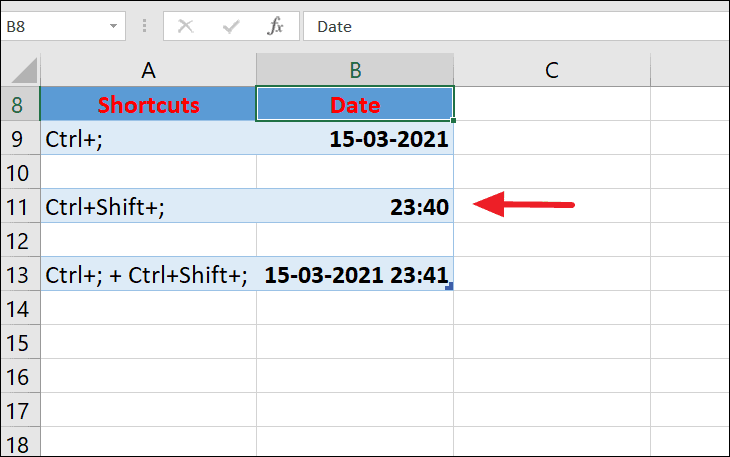
Insert a Dynamic Date Using Functions
If you need a date or time in your worksheet that updates automatically whenever the file is opened or recalculated, you can use Excel's TODAY and NOW functions to insert dynamic dates and times.
To insert a dynamic date or time, simply use the following functions in any cell. These functions do not require any arguments.
To display the current date only, use the following formula:
=TODAY()Select the cell where you want the date to appear and type the formula above. Remember, the TODAY function doesn't require any arguments; simply include the parentheses with nothing between them.

To display both the current date and time, use this formula:
=NOW()
Today's Day Number
If you need to extract only the day from the current date, excluding the month and year, use the following formula:
=DAY(TODAY())This formula nests the TODAY function inside the DAY function to return the day number of the current date.
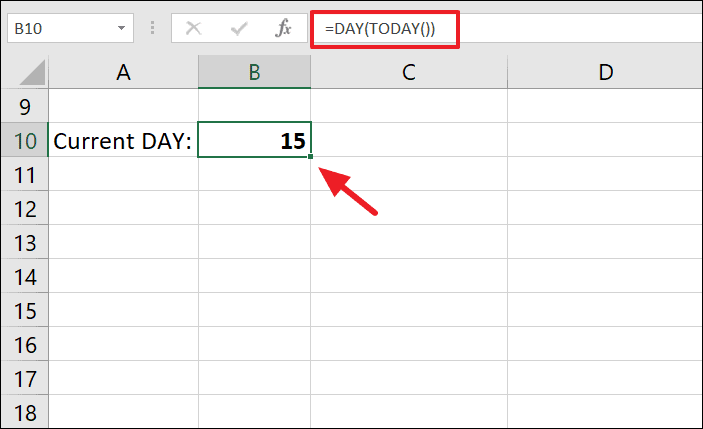
Today's Month
To retrieve the current month number without the day and year, use the following formula:
=MONTH(TODAY())This formula returns the month number of the current date.
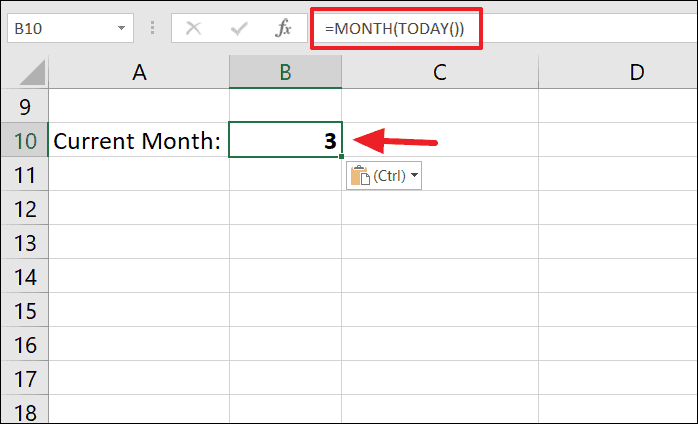
Today's Year
To obtain the current year, use this formula:
=YEAR(TODAY())This formula returns the year of the current date.

Current Time
If you want to display only the current time without the date, use this formula:
=NOW()-TODAY()After entering this formula, Excel may display a serial number instead of the time. To format it correctly, select the cell, go to the Home tab, click on the dropdown in the Number group, and select Time from the list.
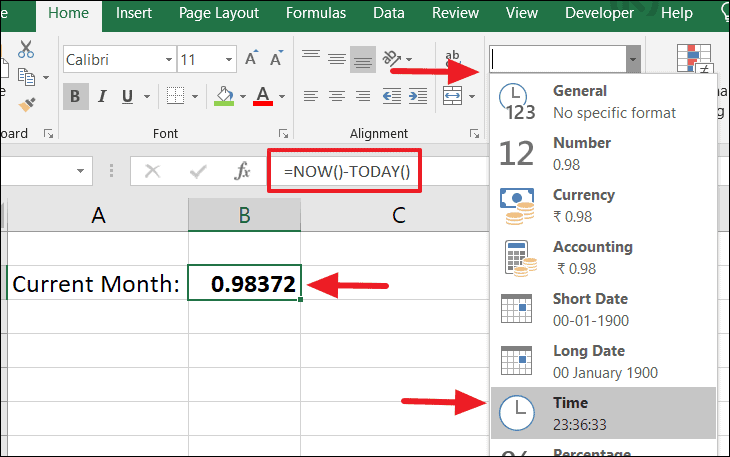
Now, the current time is displayed properly:
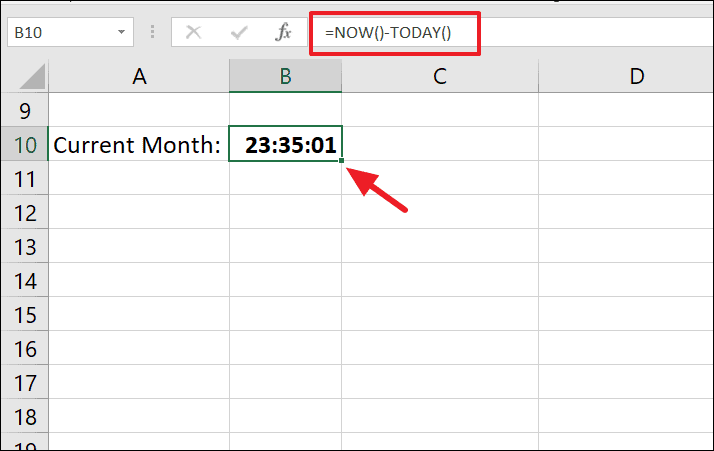
Adding or Subtracting Days from Today's Date
You can easily add or subtract days from the current date using simple arithmetic operations directly in your Excel formulas.
For example, to add 5 days to today's date, use this formula:
=TODAY()+5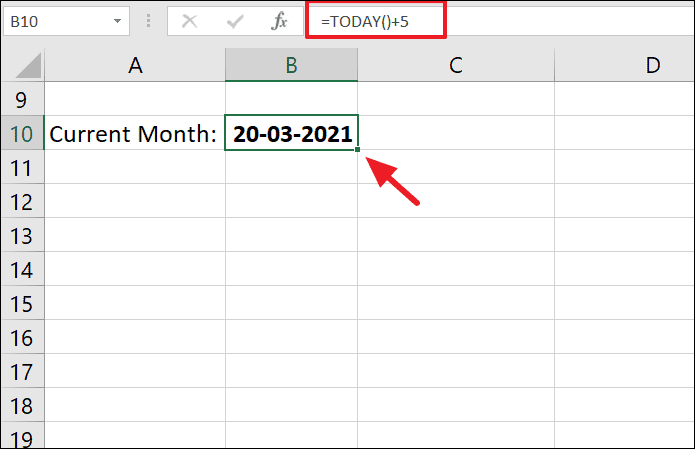
To subtract 5 days from the current date, use this formula:
=TODAY()-5
If you need to add or subtract working days, excluding weekends, you can use the WORKDAY function. This function adjusts the date by a specified number of weekdays.
To add 20 workdays to the current date:
=WORKDAY(TODAY(),20)The first argument is the start date (here, the TODAY function), and the second argument is the number of workdays to add.
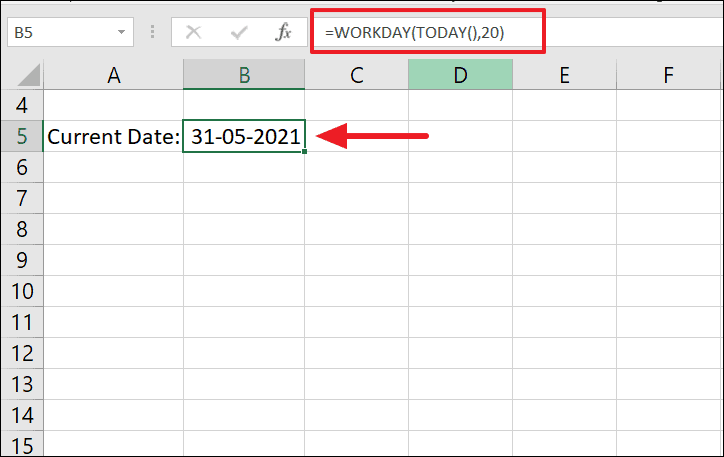
To subtract 20 workdays from today's date:
=WORKDAY(TODAY(),-20)Add a minus sign before the number of days to subtract weekdays.

With these methods, you can efficiently manage dates and times in your Excel worksheets, whether you need static timestamps or dynamic values that update automatically.











Member discussion